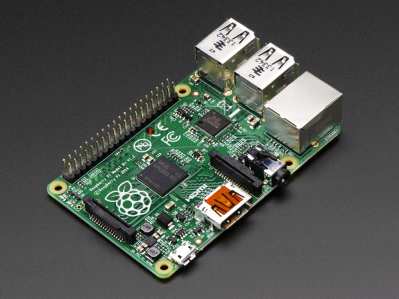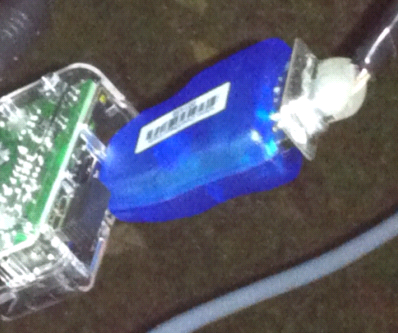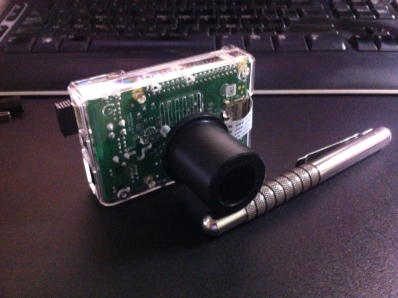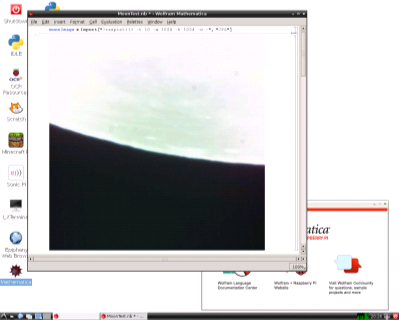|
Who knew that the tech community would be buzzing excitedly about the things Microsoft was up to these days –but it's happening. This time, it is because they have released a suite of MSN-branded mobile apps designed to run on Android and iOS devices. Timing for the launch makes good sense when you consider that Microsoft recently remodeled their MSN.com portal site (which serves to point users to their other services like Outlook.com, Skype, and Bing). Some of the apps are particularly impressive, with the ports adding platform-specific tie-ins (like MSN Health and Fitness on iOS working directly with Apple's HealthKit platform); unfortunately some obvious opportunities were missed, with many reviews already pointing out that there isn't a weather widget to work with the Android version of the MSN Weather app. Many features are ready to be enjoyed, including: synchronization across platforms (so you can maintain state between your various devices) and full customization options (so you can identify and organize the information provided by each app according to your personal interests). Curious to see what Microsoft has been up to? Download any or all of these new (and free!) Android apps:
Are you impressed by Microsoft's efforts to carve out their piece of the mobile marketplace? Do you think their mobile apps are good enough to compete (and dominate) against the competition? Microsoft Introduces a Half-Dozen MSN-branded Apps for Android is a post from: Good e-Reader |
A Semi-automated Technology Roundup Provided by Linebaugh Public Library IT Staff | techblog.linebaugh.org
Monday, December 15, 2014
Microsoft Introduces a Half-Dozen MSN-branded Apps for Android
Blizzard’s Hearthstone Heroes of Warcraft Available For Android
|
Even if you have never played a game in your life (mobile or otherwise), chances are good that you have heard about Blizzard. Maintaining their position as crowned kings of the video game world, Blizzard has hit another home-run with Hearthstone Heroes of Warcraft (their their free-to-play trading card game). With an invitation to pick up your cards and thrown down the gauntlet, Hearthstone Heroes of Warcraft promises fast-paced (and whimsical) game play that requires deliberate and calculated scheming to succeed. Powers found within your deck enable you to "sling spells, summon minions, and seize control of an ever-shifting battlefield," no matter whether you are a novice or experienced player (thanks to intuitive and engaging introductory missions, though I should also be including words like addictive in this list). Like most other Blizzard games, your assets will be tied to your Battle.net account –so you can play Hearthstone Heroes of Warcraft on any of your devices interchangeably. If you haven't yet watched the official trailer for Hearthstone Heroes of Warcraft that was released earlier this year, take a few minutes to watch it [linked below] and whet your appetite. Unfortunately for some of you, this release is limited for the time being –but those of you in Canada, Australia, and New Zealand should download Hearthstone Heroes of Warcraft for Android (which include access to an additional 120 new cards thanks to the recent Goblins vs Gnomes expansion). Everybody else will be able to play it "in the coming days," but an exact release date hasn't been announced. Blizzard's Hearthstone Heroes of Warcraft Available For Android is a post from: Good e-Reader |
Microsoft Opens Up Preview for Cloud-Based Presentation App Sway
|
Nobody is more surprised than I am that Microsoft is doing so well in the software game these days. Once upon a time the tech giant was so focused on operating systems that they had neglected just about everything else (which has really shown in their sales and reviews in recent years). Fortunately, they have new leadership with a seemingly fresh focus: apps, apps, apps (web-based as well as mobile). Their latest entry into this market is Sway: an online tool aimed to help you create presentation documents. Sway is built for the cloud, and adds to the company's efforts in converting Office into a newly-successful, centrally-hosted, subscription-based product. When the Sway preview began 10 weeks ago, Microsoft wait-listed a large number of the users requesting access (apparently there were over 175,000 requests to join across 1 million unique visitors –very good conversion numbers). There is a method to their madness in adding more beta-testers (essentially): they want feedback, and it actually sounds like they are willing to listen to it; existing user requests have seen the addition of features like: undo and redo, bulleted lists, direct text editing on the canvas, easier reordering, colour picking and pallette diversity, and PDF import. Microsoft has promised that mobile apps supporting Sway will be available in due time (and in reality, there is an iPhone app already, but it's limited to users in New Zealand and very much in its infancy), but for now hitting the Sway website using any browser on your PC, Mac, or tablet will do the trick. Whether you are excited to try Sway, or question what you might do with it, one thing is certain: Microsoft is doing their best to reinvent their signature Office product line and so far, they are doing with a certain refined software elegance. If you want to see Microsoft's full vision for Sway, take a few minutes and watch their promotional video linked below. Microsoft Opens Up Preview for Cloud-Based Presentation App Sway is a post from: Good e-Reader |
Amazon Fire TV Finally Delivers HBO Go
|
Amazon Fire TV has been getting pretty good reviews from users and critics alike, but a few things have been missing… most noteably (for many) is the absence of HBO Go. Thankfully this has been remedied and HBO subscribers can stream their favourite content from the network's movies and TV catalog on the Fire TV (though the Fire TV Stick won't have suppose until the spring of 2015). Amazon was eager to release a statement regarding their HBO Go addition:
If you are a subscriber, you can still access HBO Go for Android if you haven't grabbed yourself an Amazon Fire TV just yet (of course, if you have been meaning to, now is a good time –Amazon has reduced the price from $99 to $79 until December 28). Does this announcement make you more likely to pick up a Fire TV device? Is there something that Amazon is still missing? Amazon Fire TV Finally Delivers HBO Go is a post from: Good e-Reader |
URL: http://goodereader.com/blog/spotlight-on-android/amazon-fire-tv-finally-delivers-hbo-go
Zoe Sugg Debut Novel Outsold JK. Rowling and E. L. James
|
Zoe Sugg may not be a household name, unless you have teenage daughters. The 24 year old amasses millions of views on each video she posts on Youtube and has just published her first book. Girl Online is a YA romance novel and has sold a staggering 78,000 copies in her first week. This has seen her surpass the first Harry Potter and 50 Shades of Grey book in the same period. Zoe started her YouTube channel in 2009, primarily aimed at beauty tips and fashion advice. She is playful and has a candid approach that is absolutely infectious with her teen audience. Zoe has more than six million YouTube followers, and two million Twitter followers. Recently she took home the Best British Vlogger Award at the 2013 at the BBC Radio 1's Teen Awards, but also won the Nickelodeon Kid's Choice Award earlier this year. When any book sells a ton of copies in a short period of time, there is normally drama that ensues. In Zoe's case she has been getting a ton of flack from the media about having the book ghost written for her. Penguin, her publisher outsourced the actual writing to Siobhan Curham—an established author of both YA and adult fiction. The three sides sat down over the period of a few weeks and bantered back and fourth about the logistics. The Girl Online Book is not an autobiography, but does borrow heavily from Zoe and her day to day activities. The young writer has been getting lambasted in the media for failing to explicitly state that she did not write the book alone, despite thanking Curham in the acknowledgments of Girl Online for having been with her "every step of the way". Despite the online backlash that erupted against Sugg, Curham had stayed quiet on the controversy. But on Wednesday, Curham posted a defense of both herself and Sugg to her blog. Writing that she had signed on to help Sugg with the book not to become "famous" or "rich," Curham said that she'd agreed because she loves writing and "helping others write books." She did, however, note that it wasn't an entirely enjoyable process, saying "I did have some issues with how the project was managed. Issues which I expressed on more than one occasion. Issues which I'm afraid I'm not allowed to go into. And issues which have nothing to do with Zoe. I've seen at first hand how caring and considerate Zoe is. I've been very impressed with how she finds ways to use her (completely unexpected) fame to help others, whether that be through her vlogs, blogs, books or becoming a digital ambassador for the mental health charity MIND." I honestly think the media is more fixated on the inner workings of the publishing world, than actually talking about the book. It is more interesting to stir up controversy and crucify a young girl for doing what people only dream of, starting a successful business, amassing millions of followers and publishing a book. Zoe Sugg Debut Novel Outsold JK. Rowling and E. L. James is a post from: Good e-Reader |
URL: http://goodereader.com/blog/e-book-news/zoe-sugg-debut-novel-outsold-jk-rowling-and-e-l-james
Wakie App Turns Strangers Into Alarm Clocks
|
It was only a matter of time before social media found another use beyond sharing cute pictures of kittens and the grandkids along-side 140-character pearls of wisdom: cue Wakie. We all accept that alarm clocks are a necessary evil, with most of us using our smartphones to interrupt our peaceful slumber. What if I told you that a perfect stranger could take care of this for you by placing a phone call at a pre-arranged time? Wakie can and will. My fascination with this app started as amusement (with terms to describe users like 'sleepies' to identify people waiting on a call to wake them up), and progressed quickly to some kind of strange addiction. Using the service is free, and your account makes it possible for Wakie to match you with people ready to place the call. The service is as anonymous as you let it be (so be careful)… you input your mobile phone number (but the app uses this information behind the scenes to patch users together without divulging the real details for anybody on the call), you get to choose a username (which should ideally be easy to pronounce, even for those whose English may not be as good as yours) and shouldn't include your last name. If you happen to miss their call (or sleep through it somehow), be careful that your voicemail message doesn't divulge anything you wouldn't want a stranger to know. Once setup is complete, you set an alarm just like you would in any other smartphone app (complete with a backup if you choose). At the designated time, your phone will ring. Prefer to make the calls rather than receive them? Choose to wake sleepies and the app will alert you when somebody is ready for you. What you say is up to you, but Wakie encourages you to be respectful and enforces a 60-second time limit (so no awkward goodbyes). If somehow there isn't anybody available to make the call to wake you up, the automated system will pick up any slack (though my experience is that there is never a shortage of people willing to interrupt your sleep). Wakie has been available for Android since earlier this fall, but iPhone users only got access this week. So far Wakie has delivered over 30 million wake up calls to 1.5 million users –you should be one of them! Wakie App Turns Strangers Into Alarm Clocks is a post from: Good e-Reader |
URL: http://goodereader.com/blog/spotlight-on-android/wakie-app-turns-strangers-into-alarm-clocks
Archie Comics Will Get Rebooted in 2015
|
Archie has been chasing Betty and Veronica through the halls of Riverdale High school since 1941. Not much has changed over the years, but starting in 2015 the entire Archie comic book line will be rebooted. Jon Goldwater took over as chief executive and publisher of Archie Comics five years ago, from his father that founded the company in 1939. He has been evaluating the entire Archie line of comics, digital comics and graphic novels to get a sense on what the public wanted. Afterlife with Archie was very dark in its overtones and capitalized on the obsession with zombies in our culture. Life with Archie also was more mature, as it featured Archie in his later life and much publicized death. These comics sold very well, bookstore sales have increased 736%, and direct-market sales, which include those in specialty stores like comic book shops, rose 226% Starting in early 2015 the entire Archie comic book series will be rebooted with a new creative team, featuring Mark Waid and Fiona Staples. Mr. Waid said his primary goal was to return Archie to a modern audience, which included restoring the contemporary attitudes that the teenagers of Riverdale had lost. Not much is known yet on the exact formula that Archie will employ. The only hints that were dropped was that it would be fresh, modern and the teens would face most of the same issues as they face nowadays. The traditional Archie digests will still be published, but the company priority right now is on the reboot and making it more modern. Archie Comics Will Get Rebooted in 2015 is a post from: Good e-Reader |
URL: http://goodereader.com/blog/digital-comic-news/archie-comics-will-get-rebooted-in-2015
Amazon Optimizes iPad App for Kindle Unlimited
|
Amazon may not be selling eBooks in their iPad or iPhone Kindle app anymore, but there is a new reason to open it up again. If you are a Kindle Unlimited subscriber, the app has now been optimized so you can browse over 700,000 eBooks, borrow them and immediately start reading. The new Kindle reading app update for iOS is certainly one of the largest in recent memory, in terms of cool new features and overall enhancements. Whether you listen to audiobooks, want to find out more about an author or tend to lurk around GoodReads, there is something for everyone. It is important to keep in mind that Unlimited is only available in the US, UK and a few European markets, not everyone will be able to browse for eBooks or take advantage of the 30 day free trial. Check out the full change list below. Book Browser (for iPad): Kindle Unlimited subscribers can now browse over 700,000 books, including popular titles such as Lord of the Rings series, Harry Potter and Flash Boys: A Wall Street Revolt, and start reading immediately, without leaving the app. Tapping on a book cover displays a detail page that provides information about the book, including the book description and customer reviews. Book Browser also provides customers with the ability to search for any title from Amazon's entire catalog of Kindle books, where they can view book details, download a sample, or add it to a wish list. You can start a 30-day free trial of Kindle Unlimited to get the most out of Book Browser by visiting amazon.com/kindleunlimited. Welcome experience: New customers can get started reading right away! By selecting favorite genres, rating books you've read, and choosing books you want to read, you will get personalized book sample suggestions (powered by the Goodreads recommendation engine) to download and read for free. Goodreads integration: Goodreads customers can now share reading progress updates, highlights, and more from inside the Kindle book they are reading. Once connected (click on the Settings icon in the bottom right hand corner of the Library or Home page, then click on Social Network and select Goodreads to link accounts), customers can share reading progress updates using the new [g] button in the reader controls; share quotes on Goodreads, Facebook or Twitter; or rate and review a book on Goodreads and Amazon from the "Before You Go" screen at the end of a book. For more details and screenshots, see the Goodreads blog post at goodreads.com/blog. Next In Series Information: Customers finishing a book in a series like A Game of Thrones can learn about the next book, A Clash of Kings, and instantly add it to their wish list from the "Before You Go" screen. Book Detail Pages in the Library: By customer request, book details can now be viewed by long pressing a book cover in the library and selecting "Book Details." Customers can now see a synopsis of the book, Amazon reviews, and more. Audible Progressive Play: Start playing audiobooks as they're downloading (no need to wait for the entire download). Audiobooks can be played once you've downloaded past your current reading location. Amazon Optimizes iPad App for Kindle Unlimited is a post from: Good e-Reader |
URL: http://goodereader.com/blog/electronic-readers/amazon-optimizes-ipad-app-for-kindle-unlimited
Kindle Sales Roundup – December 15th
| There are a bunch of Kindle deals to start off this week as Amazon appears to be making a final push for the busy holiday shopping season. One of the best deals is the Kindle Paperwhite. It’s marked down to $99. As I’ve been saying since the Kindle Voyage review, the Paperwhite is a much […] |
URL: http://feeds.the-ebook-reader.com/~r/feedburner/cmWU/~3/gerPZId6XZ8/
Kobo eBook Readers on Sale
| Kobo has been making a lot of changes to their website recently. They’ve also got some of their ebook readers on sale right now. Once again the Kobo Aura is marked down to $99 from $139 both at Kobo.com and Chapters. The Kobo Aura has a high resolution 6-inch E Ink Pearl screen, a frontlight, […] |
URL: http://feeds.the-ebook-reader.com/~r/feedburner/cmWU/~3/FInItxBhx8U/
Controlling Telescopes with Raspberry Pi and Mathematica
| Eben: Here’s a guest post from Tom Sherlock, describing how he’s been able to control a telescope using a Raspberry Pi, Mathematica and the Wolfram Language. As an amateur astronomer, I’m always interested in ways to use Mathematica in my hobby. In earlier blog posts, I’ve written about how Mathematica can be used to process and improve images taken of planets and nebulae. However, I’d like to be able to control my astronomical hardware directly with the Wolfram Language. In particular, I’ve been curious about using the Wolfram Language as a way to drive my telescope mount, for the purpose of automating an observing session. There is precedent for this because some amateurs use their computerized telescopes to hunt down transient phenomena like supernovas. Software already exists for performing many of the tasks that astronomers engage in—locating objects, managing data, and performing image processing. However, it would be quite cool to automate all the different tasks associated with an observing session from one notebook. Mathematica is highly useful because it can perform many of these operations in a unified manner. For example, Mathematica incorporates a vast amount of useful astronomical data, including the celestial coordinates of hundreds of thousands of stars, nebula, galaxies, asteroids, and planets. In addition to this, Mathematica‘s image processing and data handling functionality are extremely useful when processing astronomical data. Previously I’ve done some work interfacing with telescope mounts using an existing library of functions called ASCOM. Although ASCOM is powerful and can drive many devices associated with astronomy, like domes and filter wheels, it is limited because it only works on PCs and needs to be pre-installed on your computer. I wanted to be able to drive my telescope directly from Mathematica running on any platform, and without any special set up. Telescope Serial Communication Protocols I did some research and determined that many telescope mounts obey one of two serial protocols for their control: the Meade LX200 protocol and the Celestron NexStar protocol. The LX200 protocol is used by Meade telescopes like the LX200 series as well as the ETX series. The LX200 protocol is also used by many non-Meade telescope mounts, like those produced by Losmandy and Astro-Physics. The NexStar protocol is used by Celestron telescopes and mounts as well as those manufactured by its parent company, Synta, including the Orion Atlas/Sirius family of computerized mounts. The full details of these protocols can be found in the Meade Telescope Serial Command Protocol PDF and the NexStar Communication Protocol PDF. A notable exception is the Paramount series of telescope mounts from Software Bisque, which use the RTS2 (Remote Telescope System) protocol for remote control of robotic observatories. The RTS2 standard describes communication across a TCP/IP link and isn’t serial-port based. Support for RTS2 will have to be a future project. Since Mathematica 10 has added direct serial-port support, it’s possible to implement these protocols directly in top-level Wolfram Language code and have the same code drive different mounts from Mathematica running on different platforms, including Linux, Mac, Windows, and Raspberry Pi. Example: Slewing the Scope Here’s an example of opening a connection to a telescope mount obeying the LX200 protocol, setting the target and then slewing to that target. Open the serial port (“/dev/ttyUSB0″) connected to the telescope: theScope = DeviceOpen["Serial", {"/dev/ttyUSB0", "BaudRate" -> 9600, "DataBits" -> 8, "Parity" -> None, "StopBits" -> 1}]; First we need a simple utility for issuing a command, waiting for a given amount of time (usually a few seconds), and then reading off the single-character response. ScopeIssueCommand1[theScope_, cmd_String]:= Module[{}, DeviceWrite[theScope, cmd]; Pause[theScopeTimeout]; FromCharacterCode[DeviceRead[theScope]] ]; These are functions for setting the target right ascension and declination in the LX200 protocol. Here, the right ascension (RA) is specified by a string in the form of HH:MM:SS, and the declination (Dec) by a string in the form of DD:MM:SS. ScopeSetTargetRightAscension[theScope_,str_String] := ScopeIssueCommand1[theScope,":Sr"<>str<>"#"]; ScopeSetTargetDeclination[theScope_,str_String] := ScopeIssueCommand1[theScope,":Sd"<>str<>"#"]; Now that we have the basics out of the way, in order to slew to a target at coordinates specified by RA and Dec strings, setting the target and then issuing the slew command are combined. ScopeSlewToRADecPrecise[ theScope_, ra_String, dec_String]:= Module[{}, ScopeSetTargetRightAscension[theScope,ra]; ScopeSetTargetDeclination[theScope, dec]; ScopeSlewTargetRADec[theScope] ]; We can also pass in real values as the coordinates, and then convert them to correctly formatted strings for the above function. ScopeSlewToRADecPrecise[ theScope_, ra_Real, dec_Real]:= Module[{rah,ram,ras,rastr,dd,dm,ds,decstr}, rah=ToString[IntegerPart[ra]]; ram=ToString[IntegerPart[Abs[FractionalPart[ra]]*60]]; ras=ToString[IntegerPart[FractionalPart[Abs[ FractionalPart[ra]]*60]*60]]; rastr=rah<>":"<>ram<>":"<>ras; dd=ToString[IntegerPart[dec]]; dm=ToString[IntegerPart[Abs[FractionalPart[dec]]*60]]; ds=ToString[IntegerPart[FractionalPart[Abs[ FractionalPart[dec]]*60]*60]]; decstr=dd<>":"<>dm<>":"<>ds; ScopeSlewToRADecPrecise[theScope, rastr, decstr] ]; Now we can point the scope to the great globular cluster in Hercules: ScopeSlewToRADecPrecise[theScope, AstronomicalData["M13","RightAscension"], AstronomicalData["M13","Declination"]]; Slew the scope to the Ring Nebula: ScopeSlewToRADecPrecise[theScope, NebulaData["M57","RightAscension"], NebulaData["M57","Declination"]]; And slew the scope to Saturn: ScopeSlewToRADec[PlanetData["Saturn","RightAscension"], PlanetData["Saturn","Declination"]]; When the observing session is complete, we can close down the serial connection to the scope. DeviceClose[theScope]; Please be aware that before trying this on your own scope, you should have limits set up with the mount so that the scope doesn’t accidentally crash into things when slewing around. And of course, no astronomical telescope should be operated during the daytime without a proper solar filter in place. The previous example works with Mathematica 10 on all supported platforms. The only thing that needs to change is the name of the serial port. For example, on a Windows machine, the port may be called “COM8″ or such. Telescope Control with Raspberry Pi One interesting platform for telescope control is the Raspberry Pi. This is an inexpensive ($25–$35), low-power-consumption, credit-card-sized computer that runs Linux and is tailor-made for all manner of hackery. Best of all, it comes with a free copy of Mathematica included with the operating system. Since the Pi is just a Linux box, the Wolfram Language code for serial-port telescope control works on that too. In fact, since the Pi can easily be wirelessly networked, it is possible to connect to it from inside my house, thus solving the number one problem faced by amateur astronomers, namely, how to keep warm when it’s cold outside. The Pi doesn’t have any direct RS-232 ports in hardware, but an inexpensive USB- to-serial adapter provides a plug-n-play port at /dev/ttyUSB0. In this picture, you can see the small wireless network adapter in the USB socket next to the much larger, blue, usb-to-serial adapter. Astrophotography with the Pi Once I had the Pi controlling the telescope, I wondered if I could use it to take pictures through the scope as well. The Raspberry Pi has an inexpensive camera available for $25, which can take reasonably high-resolution images with a wide variety of exposures. This isn’t as good as a dedicated astronomical camera, because it lacks the active cooling needed to take low-noise images of deep sky objects, but it would be appropriate for capturing images of bright objects like planets, the Moon, or (with proper filtering) the Sun. It was fairly easy to find the mechanical dimensions of the camera board on the internet, design a telescope adapter… …and then build the adapter using my lathe and a few pennies worth of acetal resin (Dupont Delrin®) I had in my scrap box. The normal lens on the Pi camera was unscrewed and removed to expose the CCD chip directly because the telescope itself forms the image. Note that this is a pretty fancy adaptor, and one nearly as good could have been made out of 1 1/4 plumbing parts or an old film canister; this is a place where many people have exercised considerable ingenuity. I bolted the adaptor to the side of the Pi case using some 2-56 screws and insulating stand-offs cut from old spray bottle tubing. This is how the PiCam looks plugged into the eyepiece port on the back of my telescope, and also plugged into the serial port of my telescope’s mount. In this picture, the PiCam is the transparent plastic box at the center. The other camera with the gray cable at the top is the guiding camera I use when taking long exposure astrophotographs. Remotely Connecting to the PiCam The Pi is a Linux box, and it can run vncserver to export its desktop. You can then run a vnc client package, like the free TightVNC, on any other computer that is networked to the Pi. This is a screen shot taken from my Windows PC of the TightVNC application displaying the PiCam’s desktop. Here, the PiCam is running Mathematica and has imported a shot of the Moon’s limb from the camera module attached to the telescope via the adapter described above. It’s hard to read in the above screen shot, but here is the line I used to import the image from the Pi’s camera module directly into Mathematica: moonImage=Import[ "!raspistill -ss 1000 -t 10 -w 1024 -h 1024 -o -", "JPG"] This command invokes the Pi’s raspistill camera utility and captures a 1024×1024 image exposed at 1,000 microseconds after a 10-second delay, and then brings the resulting JPEG file into Mathematica. One problem that I haven’t solved is how to easily focus the telescope remotely, because the PiCam’s preview image doesn’t work over the vnc connection. One interesting possibility would be to have Mathematica take a series of exposures while changing the focus via a servo attached to the focus knob of the telescope. Conclusion Mathematica and the Wolfram Language provide powerful tools for a wide variety of device control applications. In this case, I’ve used it on several different platforms to control a variety of astronomical hardware. |
URL: http://www.raspberrypi.org/controlling-telescopes-with-raspberry-pi-and-mathematica/
A geek’s guide to geeky holiday gifts (part 1)
| Looking for the right gift for the techie in your life? Perhaps I can help you out. See, here at OverDrive, I get my eager little hands on tons of new tablets and eBook reading devices every year–often right after they release. If you combine that experience with my natural, nerdy In short, I'm here to give you my advice on what tablets, eBook readers, and even phones are particularly good at media consumption (eBooks, audiobooks, movies, etc.). The end goal: to help you with your holiday shopping. This will be a two-parter. Today's post will give a little background, but cover mostly tablets and eBook readers. Tomorrow, you'll get part 2, which includes some less expensive options, "phablets," and some parting words of wisdom. A bold new era (the background I mentioned)This year is a bit unique because there's a new-ish device type that you should probably consider when purchasing gifts for a lover of media consumption. Have you ever heard of a phablet? It's a cross between a tablet and a smartphone, which basically means: "giant smartphone." They're not as good as a tablet (in my book) for reading, but if you only want to lug aroundone device, then a phablet might be just the thing. Personally, my go-to device for reading books or watching movies while traveling is still my tablet. That being said, I'm going to try to cover a somewhat broad range of devices so you can pick the one that works best for the people on your list. Unleash the tablets!My top pick: Nvidia SHIELD tabletThe Nvidia SHIELD tablet is pretty awesome. It's $299 of high-end, 8", HD glory. It has killer specs (with an Nvidia Tegra K1 SoC), and even includes front-facing stereo speakers (which every tablet should have). The screen, while not necessarily the best out there, is still pretty darn good, so reading for extended periods isn't a problem. In fact, the most common complaint that I've seen is this: "it's made out of plastic." I would argue that sometimes plastic is the better choice, and doesn't always feel "cheap." The real beauty of the Shield tablet is this: at $299, you're not paying a super-premium price, but you're getting a premium tablet (plastic and all). I'm not the only one that thinks so either, most review sites give the Shield Tablet high marks.
|
URL: http://feedproxy.google.com/~r/OverdrivesDigitalLibraryBlog/~3/plOXfPlb78k/
















 obsession with technology, then you get me: your friendly neighborhood tech advice geek.
obsession with technology, then you get me: your friendly neighborhood tech advice geek.
